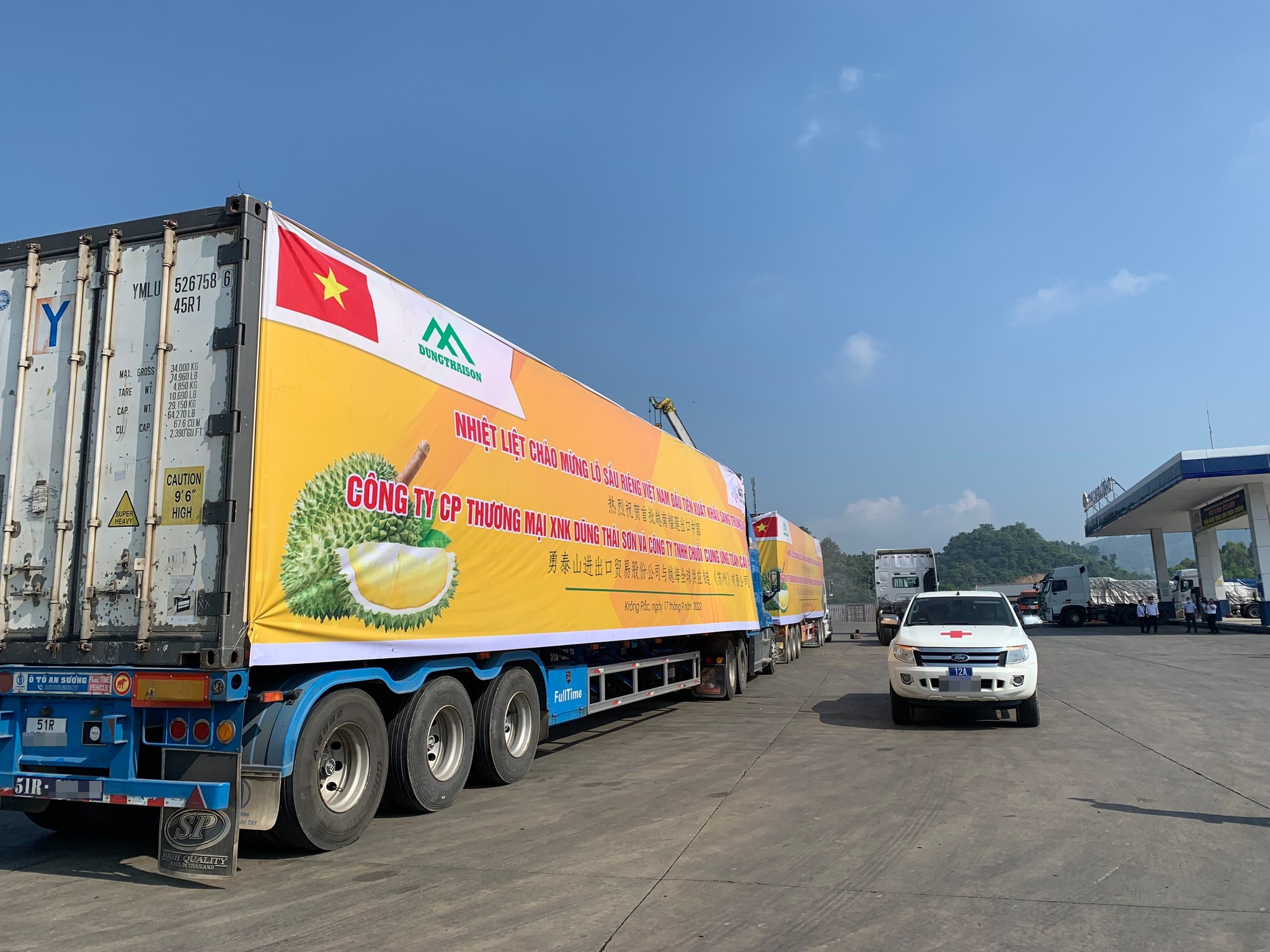Agricultures, Foods, News & Event
Vietnamese agricultural products are exported to China the most
With a population of nearly 1.5 billion people, China has always been an attractive market for exporting countries. Especially for Vietnamese agricultural products, this is the largest and most potential consumption market.
The “kitchen” of many Vietnamese agricultural products
At the end of October, Ms. Nguyen Thi Anh Thu, Director of Thanh Nhon Seafood and General Trading Co., Ltd (HCMC), excitedly boasted: “I just signed a contract to officially export lobster products. live to Hong Kong in unlimited quantities, an average of 4-5 tons per week, selling price 41.5 USD/kg. This is very good news for official exporters in the context that the epidemic is still complicated. Previously, Chinese enterprises also signed contracts for up to 2,000 tons of export in the whole year of 2023. The increase in imports by China has helped the price of lobster purchased in the country gradually recover. Currently, 90% of Vietnam’s lobster production is consumed by the Chinese market, so the selling price as well as the output depend on this market of billions of people.

The Chinese market has a great impact on the prices and output of many agricultural products in Vietnam as well as in many countries in the region. From large output items such as coffee, pepper, rice, seafood … to specific agricultural products such as areca berries, duck feathers … are also purchased by China. The “kitchen” of this world helps many agricultural products of Vietnam increase in value and export volume.
Bach Khanh Nhut, Vice Chairman of the Vietnam Cashew Association (Vinacas), recalls: “In the past, the Chinese market was quite easy, they consumed more than 40% of broken, flat, bad cashews, and almost didn’t ask for anything. ask for an inspection standard. Since the last few years, China’s standard barriers have become increasingly strict, Vietnamese enterprises that want to export to this market must meet these conditions. However, it is for that reason that high-quality cashew products have penetrated into China, and the turnover has also increased gradually. Currently, Vietnam’s largest cashew nut export market share still belongs to the US, but China has quickly risen to take the second place of Europe, and is not much less than the US.
China is the largest fruit consumption market of Vietnam so far, the growth of export turnover depends on this market.
Mr. Dang Phuc Nguyen, General Secretary of Vietnam Fruit and Vegetable Association
At the border gates of northern border provinces, every day, hundreds of container trucks and refrigerated trucks transport fruits and agricultural products for export to China. Mr. Dang Phuc Nguyen, General Secretary of the Vietnam Fruit and Vegetable Association, said: “China is the largest fruit consumption market of Vietnam so far, the growth of export turnover depends on this market. For example, this year, China tightened measures to prevent the Covid-19 epidemic, fruit export turnover immediately decreased. Despite efforts to expand the market to other regions such as the Middle East, Australia or Europe, the reality cannot compensate or replace the Chinese market.
The story of price increase and decrease in prices of dragon fruit, banana, mango, watermelon… mostly depends on the consumption situation of China. Even pork, which has not been officially exported to China, is still waiting for measures to loosen border gates to help farmers escape losses because of low prices. It can be seen that the relationship between Vietnam’s agricultural products and China’s “kitchen” is becoming increasingly intimate.
Since the early 2000s, Mr. Dang Le Nguyen Vu, the founder of Trung Nguyen coffee brand, has seen the great potential of the Chinese market: “It only takes 1 Chinese person to spend 1 USD a day to buy coffee in China. Just buy coffee, our income is huge, up to billions of dollars.” Trung Nguyen Legend has developed a network of distributors and partners in China and promoted exports through official channels. G7 energy coffee products have long been widely sold on all major Chinese sales websites such as Alibaba, Taobao.com, Tmall.com, Yihaodian.com, jd.com, and over 1,000 super market in China. Most recently, Trung Nguyen Legend has opened a coffee shop in Shanghai, the city dubbed the “coffee capital of the world”, surpassing Tokyo (Japan) and London (UK).
But not only coffee, one of the sectors with the strongest growth must be shrimp and pangasius. The Vietnam Association of Seafood Exporters and Producers (VASEP) said: In the nine months of 2022, pangasius exports earned US$1.97 billion, up 83% over the same period in 2021. While other markets If the other trend tends to decrease because of inflation, the Chinese market in September is still worth 49 million USD, up 190% over the same period in 2021. In 10 months, China is the largest pangasius consumption market. with a value of 590 million USD, up 111% over the same period last year.
Ms. Le Hang, Communications Director of VASEP, said: The large-scale seafood restaurant chain in China is experiencing strong growth momentum, the chain of fast food restaurants, food delivery, hot pot, collective meals is growing. rapid development; Smart services, digital technology are widely applied in the service industry, etc. have helped increase the demand for food and seafood consumption. China is expected to consume about 36% of the total global seafood production by 2028, with per capita consumption reaching about 44.3 kg compared with 39.3 kg in the current period. With the improvement of people’s incomes and the development of logistics services, China’s seafood consumption market will maintain its growth in the long term. Currently, Vietnam is one of the largest seafood exporters to China and in the future there will be even more potential for growth with geographical advantages and tariff barriers removed.
There is strength in black tiger shrimp, a product that Chinese consumers like very much, especially during festivals at the end of the year, because its bright red color symbolizes abundance and fullness, according to Mr. Tran. Anh Khoa, General Director of Anh Khoa Co., Ltd. (Ca Mau), the demand of Chinese customers is very large and the company’s orders have also increased sharply. However, the difficulty is that customs clearance still takes a long time. He expressed his hope that the meeting between the most senior leaders of the two countries will expand trade and cooperation opportunities of the two countries. Because at present the potential of both sides is still much and has not been fully exploited.
Rice products are also experiencing a strong increase in consumption from China. Previously, Vietnamese enterprises mainly exported rice to the Philippines, Africa and Malaysia, recently China has risen to occupy the second largest import market share, reaching a turnover of nearly 500 million USD. Similarly, with vegetables and fruits, Mr. Dang Phuc Nguyen expected that through this visit by General Secretary Nguyen Phu Trong, the Chinese side might open more doors to Vietnamese vegetables and fruits in particular and agricultural products and goods. Vietnam in general. On the contrary, Vietnamese farmers and businesses also need to promote good agricultural practices and meet food safety standards to have more area codes and packing facilities, especially for fruits. durian, to take advantage of opportunities to improve bilateral trade relations. Currently, this country is importing vegetables and fruits from Vietnam about 2 – 3 billion USD/year out of the total 15 billion USD imported this item.
Source: https://thanhnien.vn/nong-san-viet-xuat-qua-trung-quoc-nhieu-nhat-post1516232.html
